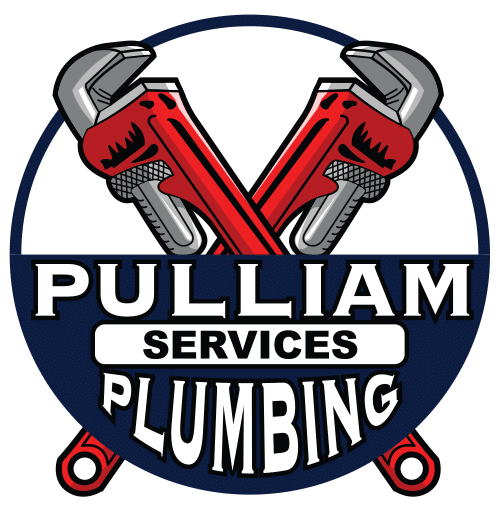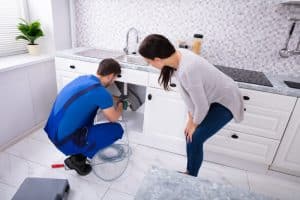Leaky pipes can be more than just a minor annoyance—they can lead to significant water damage and high utility bills if not addressed promptly. A small leak may seem harmless at first, but over time, it can cause mold growth, structural damage, and costly repairs. Recognizing the early signs of leaky pipes and understanding how to fix them can save you from these headaches.
There are several common reasons why pipes might start to leak. Corrosion, high water pressure, and loose pipe joints are among the typical culprits. Aging pipes can also develop leaks simply due to wear and tear over the years. Knowing the cause can help you decide on the best course of action, whether it’s a quick DIY fix or calling in a professional plumber.
In this article, we’ll explore the common causes of leaky pipes, provide simple DIY solutions for minor leaks, and list the essential tools and materials you’ll need for repairs. Additionally, we’ll help you identify when a leak is beyond a DIY fix and requires professional attention. With the right knowledge and tools, you can tackle minor leaks confidently and know when to reach out for expert help.
I. Common Causes of Leaky Pipes
Corrosion
One of the most common causes of leaky pipes is corrosion. Over time, metal pipes can corrode due to various factors like water quality, age, and chemical reactions. Corrosion weakens the pipe, eventually leading to holes and leaks. If you notice discolored water or low water pressure, it might be a sign that your pipes are corroding. Routine inspections help catch corrosion early before it leads to significant damage.
High Water Pressure
High water pressure might seem like a good thing, but it can actually harm your plumbing. Excessive pressure puts a strain on pipes, causing them to crack or burst over time. If you hear banging noises when water is flowing, it could be a sign of high water pressure. Installing a pressure regulator can help maintain safe water pressure levels and prevent leaks.
Pipe Joints
Leaks often occur at pipe joints, where two sections of pipe connect. Over time, these joints can become loose or damaged, especially if they are exposed to temperature changes or physical stress. If you notice moisture or pooling water around joints, it’s likely due to a leak. Regular maintenance and checking these connections can help you avoid more significant issues down the road.
II. DIY Fixes for Minor Pipe Leaks
Using Pipe Sealant Tape
Pipe sealant tape, also known as Teflon tape, is a quick and easy fix for minor leaks. Simply wrap the tape around the threaded sections of a leaking pipe or fitting to create a tight seal. Make sure the tape overlaps slightly, and press it firmly so it adheres well. This simple tool can prevent small leaks from turning into major problems.
Applying Epoxy Putty
Epoxy putty is another effective solution for minor pipe leaks. This material can be molded by hand and applied directly to the leak. It hardens quickly, creating a waterproof seal. First, turn off the water supply and dry the area around the leak. Knead the epoxy putty until it’s mixed well, and then press it onto the leaking area. Wait for it to harden before turning the water back on.
Installing a Pipe Clamp
A pipe clamp can provide a fast and secure fix for leaky pipes. This tool consists of a rubber pad and a metal clamp that surrounds the pipe, sealing the leak. To use a pipe clamp, turn off the water and dry the leaking area. Place the rubber pad over the leak and secure it with the metal clamp. Tighten the screws to create a tight seal. This method is great for emergency fixes and can hold up until a more permanent repair is made.
By using these simple DIY methods, you can tackle minor leaks and keep your plumbing working smoothly. However, some leaks may be too severe or complex for DIY fixes and will require professional intervention. Following these steps can help you identify and address small problems before they escalate.
III. Essential Tools and Materials for Pipe Repair
Must-Have Tools for Every Homeowner
Having the right tools at home can make managing pipe repairs much easier. Here are some essential tools every homeowner should have:
1. Adjustable Wrench: Useful for tightening and loosening pipe fittings.
2. Pipe Cutter: Makes clean cuts on copper and plastic pipes, which is crucial for proper repairs.
3. Plumber’s Tape: Also known as Teflon tape, it helps seal threaded pipe connections and prevents leaks.
4. Pipe Wrench: Provides a firm grip on pipes, making it easier to tighten or loosen them.
5. Hacksaw: Useful for cutting through metal and plastic pipes if you need to replace a section.
Spare Parts to Keep on Hand
Keeping a few spare parts around can save time and stress when a leak occurs. Here are some useful parts to have:
1. Pipe Fittings: Elbows, tees, and couplings can help you make necessary connections.
2. Rubber Gaskets: Important for creating watertight seals.
3. Pipe Caps: Useful for capping off pipes temporarily during repairs.
4. PVC Pipe Sections: These can be handy for quick replacements.
5. Saddle Valves: Useful for adding quick shut-off points for repairs.
Being prepared with these tools and parts ensures you’re ready to handle minor leaks and pipe repairs efficiently. It can also save you from having to rush to the store in the middle of a plumbing emergency.
IV. When to Call in Professional Help for Leaky Pipes
Signs That the Leak is Serious
Sometimes, a pipe leak can be too serious for a DIY fix. Here are some signs that indicate you should call a professional:
1. Water Stains on Walls or Ceilings: This can mean that the leak is inside a wall or ceiling, which usually requires more expertise to fix.
2. Rapidly Increasing Water Bills: If you notice a sudden spike in your water bill without an apparent reason, it might be due to a hidden leak.
3. Mold Growth: Mold thrives in moist areas and can cause health problems. If you notice mold, you likely have a persistent leak that needs immediate attention.
4. Multiple Leaks: If you have more than one leak, it could mean a larger problem with your plumbing system.
5. Structural Damage: If water is causing floors or walls to weaken or warp, it’s crucial to get professional help right away.
How Pulliam Plumbing Can Resolve Complex Leaks
For complex or difficult leaks, Pulliam Plumbing offers expertise you can trust. We handle everything from major pipe replacements to intricate repairs. Our team has the tools and knowledge to fix leaks quickly and efficiently, reducing the risk of further damage. Whether it’s a hidden leak behind a wall or a burst pipe, we provide comprehensive solutions that ensure your plumbing system runs smoothly.
Conclusion
Leaks in your plumbing system can cause significant stress and damage if not addressed promptly. Knowing how to identify common causes and apply DIY fixes gives you an edge in handling minor issues. However, not all leaks are straightforward, and serious problems require professional intervention. Being prepared with the right tools and spare parts can make a big difference in managing these situations effectively.
When you encounter a tricky leak that seems too complex to handle on your own, it’s crucial to call in experts to prevent further damage. Pulliam Plumbing is your go-to resource for professional and reliable plumbing services. We offer quick, effective solutions for all your plumbing needs, ensuring peace of mind.
If you’re dealing with a leaky pipe and need the help of the best plumbers in Boerne, TX, contact Pulliam Plumbing today. We’ll help you restore your plumbing to perfect condition!




